For a few electrifying days, the world as you know it stops. Carnival shatters the mundane, igniting history, culture, and creativity into an explosion of freedom and rebellion. It’s the moment when every rule is meant to be broken, every identity shed, and the ordinary transformed into something extraordinary. Rooted in centuries of tradition, carnival is a celebration of humanity’s most primal desires: the need for expression, connection, and liberation. The word “carnival” comes from the Latin carne levare, meaning “to remove meat,” marking the last indulgence before the discipline of Lent. But carnival is far more than indulgence—it is freedom.
The origins of carnival trace back to ancient Roman festivals like Saturnalia, where societal norms were upended and people of all classes mingled in revelry. Venice’s carnival embraced anonymity with masks, offering escape from rigid hierarchies, while Cologne turned floats into bold political statements through satire. In Santa Cruz de Tenerife, ancient rituals blend with modern energy, creating a festival like no other. Each carnival transcends the ordinary, inviting us to experience the extraordinary. Are you ready to join the revolution?
The Carnival of Venice: An Invitation to Step Behind the Mask
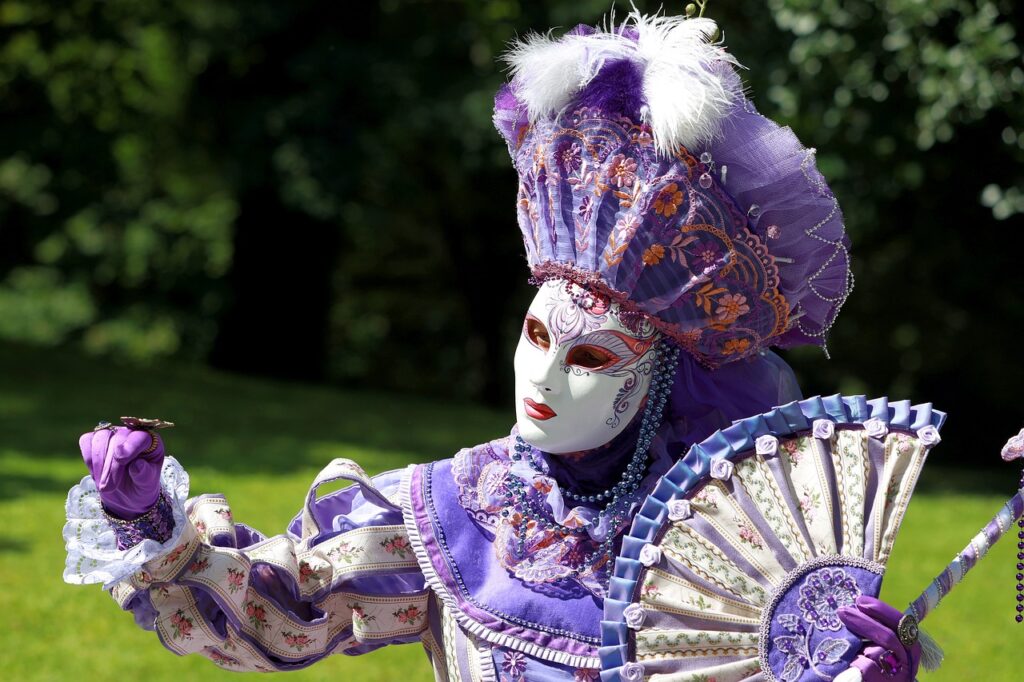
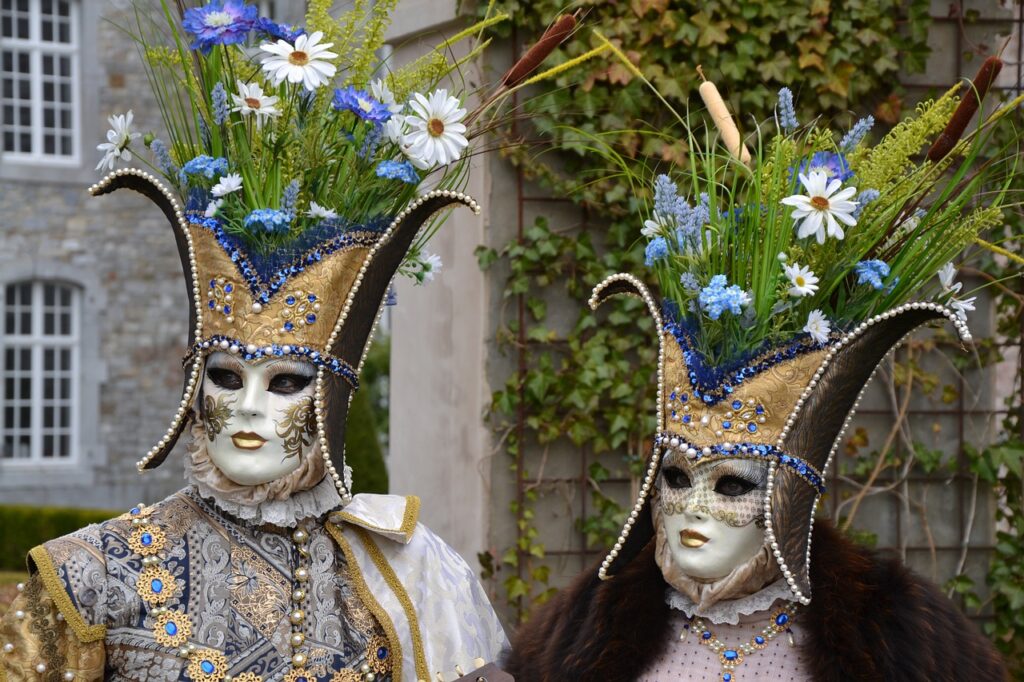
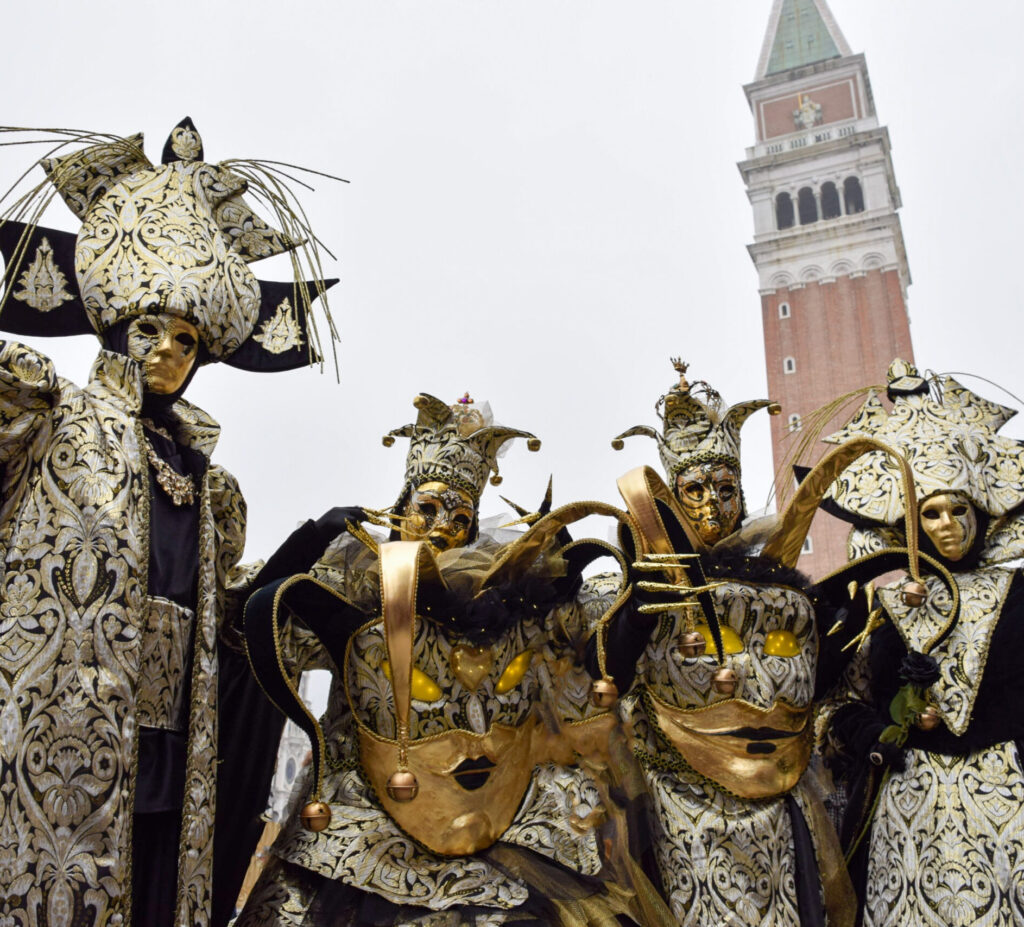
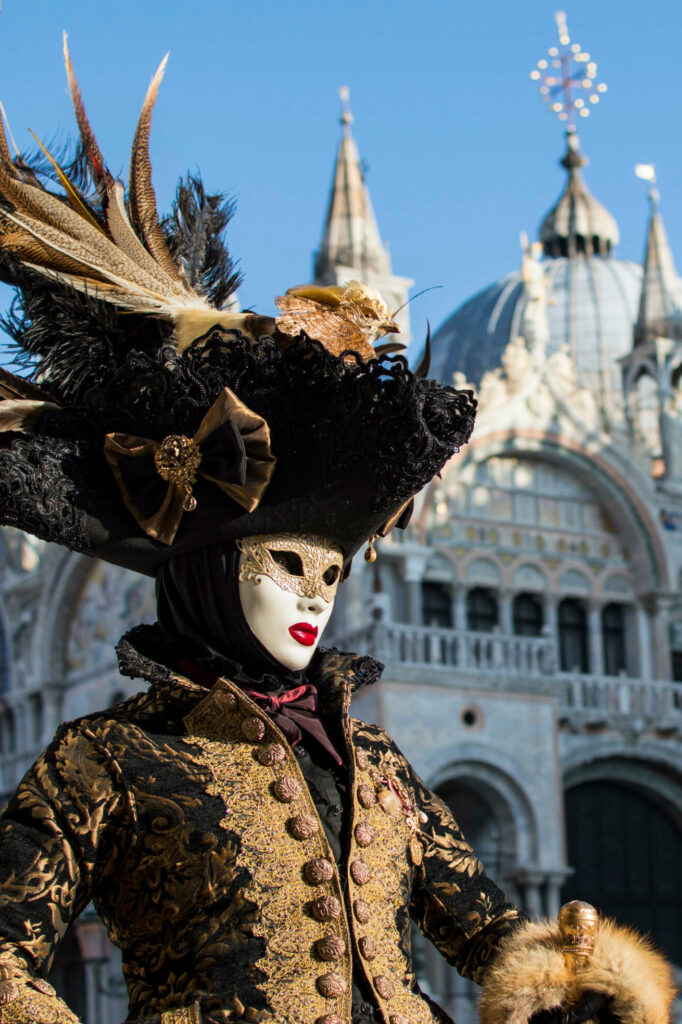
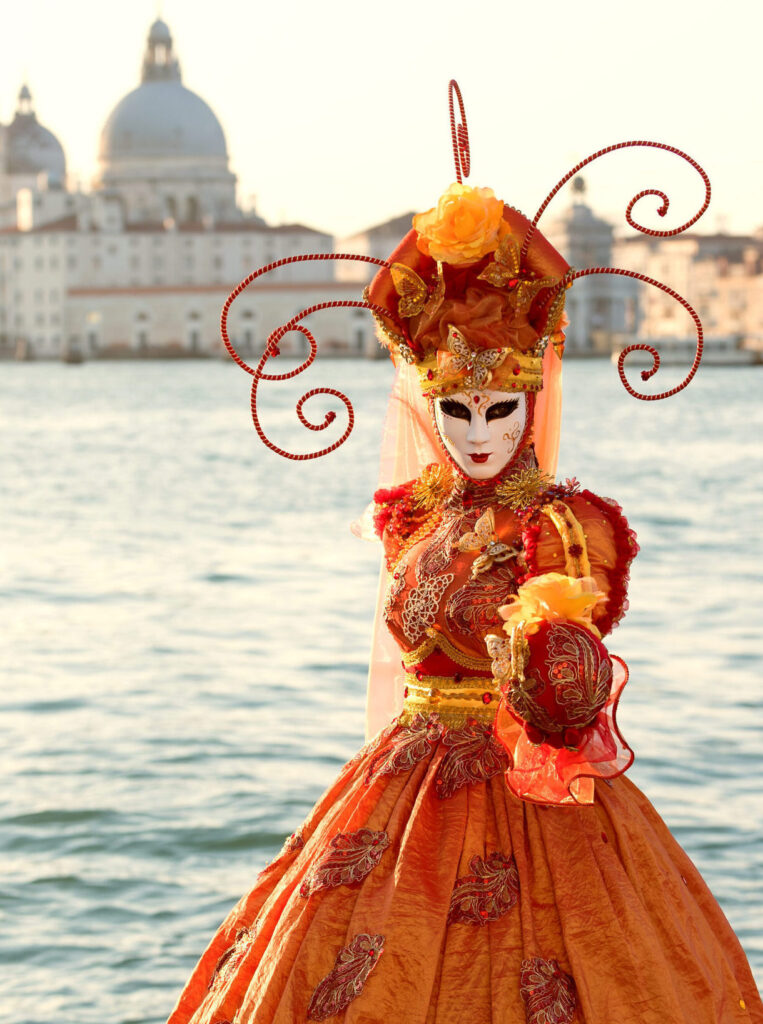
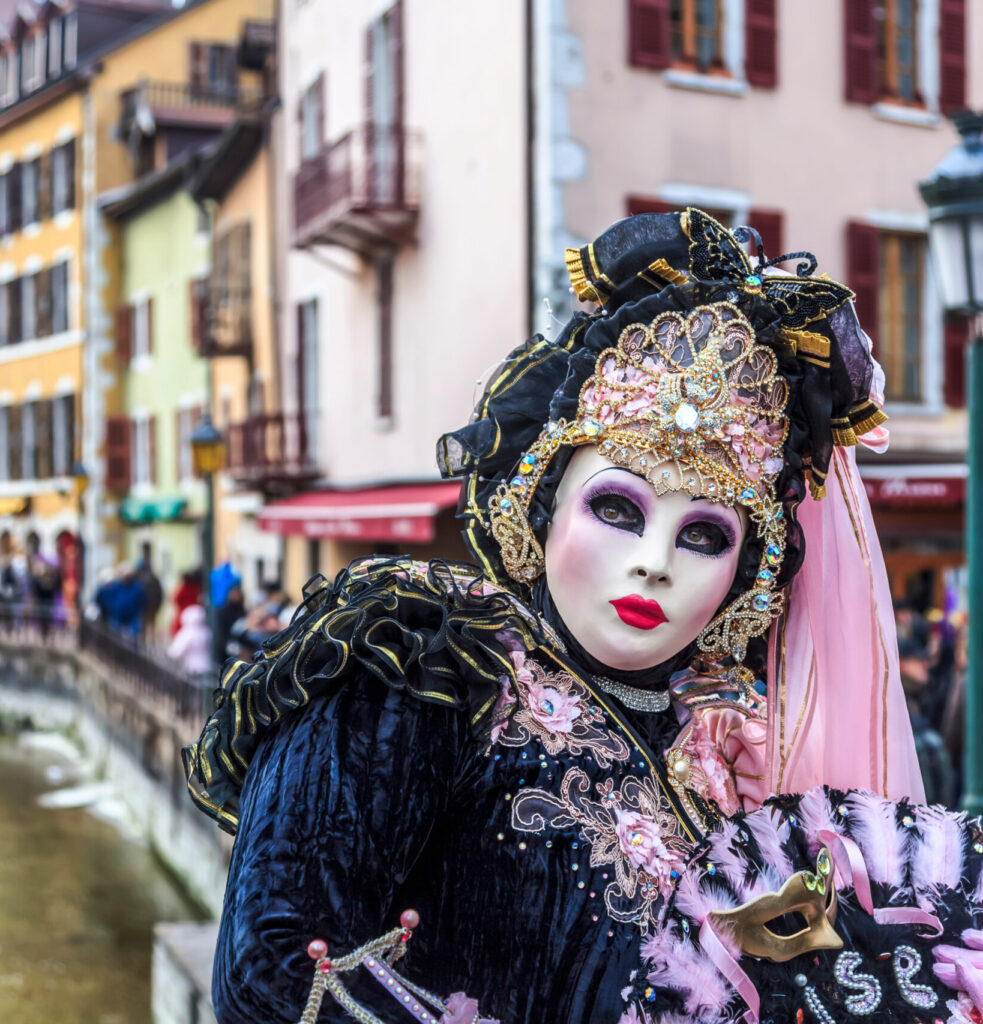
A city where time slips through the cracks of cobblestone streets, where every canal whispers secrets of centuries past, and where, for a fleeting moment each year, reality bows to fantasy. Venice, the “Floating City,” is never more alive, more captivating, than during its legendary Carnival—a celebration of mystery, elegance, and rebellion.
A Stage for History and Fantasy
Venice’s Carnival begins with the city transforming into a grand stage, where every canal, piazza, and palazzo takes on a role in the spectacle. At its heart is the Flight of the Angel, a tradition that dates back centuries. An angel descends gracefully from the Campanile of St. Mark’s Basilica, inaugurating the festivities with a breathtaking display. As the city awakens to the rhythm of celebration, the Grand Canal becomes a glittering artery of the Carnival. Gondolas adorned with lights glide through its waters, carrying passengers dressed in silks and velvets, their reflections dancing in the ripples, while Piazza San Marco hums with the energy of street performances and costumed revelers. The story of Venice’s Carnival traces its roots to the 12th century, emerging as an escape from the rigid constraints of medieval life. For a fleeting moment, masks leveled the playing field, concealing identities and dissolving the boundaries of class. By the 18th century, the Carnival of Venice had become a beacon of indulgence and artistry across Europe. The Bauta, a mask that allowed wearers to eat and drink without removal, symbolized this era’s spirit of liberation, offering Venetians a chance to mingle freely and escape societal norms. Legend has it that Casanova, cloaked in anonymity, found inspiration—and infamy—amid the intrigue of these masquerades.
Among the Carnival’s most opulent traditions is the Ballo del Doge, an exclusive masked ball held in a historic palazzo. While steeped in modern elegance, the event draws inspiration from Venice’s storied past. Guests arrive in meticulously crafted costumes, stepping into an evening where history and fantasy intertwine. Beneath chandeliers and frescoed ceilings, each detail recalls the grandeur of a bygone era, creating an atmosphere of timeless sophistication. For those seeking a quieter celebration, Venice’s hidden corners offer their own enchantment. Narrow streets lead to secluded courtyards, lantern-lit cafés whisper of forgotten stories, and moonlit canals reflect a serenity that contrasts beautifully with the carnival’s vibrant energy.
The Allure of the Masks: Artisans of Mystery
Venetian masks are more than ornaments—they are windows into a rich history where artistry and symbolism converge. Each feather, jewel, and stroke of paint tells a story, meticulously crafted by Venice’s master artisans. These masks, rooted in tradition and cultural significance, reflect the city’s centuries-old dedication to creativity and craftsmanship.
Among the most captivating designs is the Moretta, an enigmatic oval mask worn by women and held in place by biting a button at the mouth. This unique feature rendered the wearer silent, adding an air of mystery and allure during social gatherings. Equally iconic is the Plague Doctor mask, with its long, haunting beak. Initially designed as practical protection for physicians during the Black Death, it has evolved into a poignant reminder of resilience in the face of adversity. The vibrant Commedia dell’Arte masks, such as Arlecchino and Pantalone, capture the essence of Italian theatrical traditions. These masks, adorned with exaggerated expressions, were central to performances that combined humor with sharp social commentary. Today, they stand as enduring symbols of Italy’s artistic heritage. Venetian mask-making remains a celebrated craft, preserved by generations of artisans. Visitors to the city can witness this artistry firsthand in historic ateliers, where traditional techniques meet timeless designs. Each mask is a testament to Venice’s ability to merge beauty with narrative, creating objects that are as meaningful as they are mesmerizing.
Beyond the Masks: Secrets of the Labyrinth
For those seeking more than the spectacle, Venice offers quieter discoveries during the Carnival. The nearby islands of Murano and Burano provide serene escapes with deep artisanal roots. In Murano, skilled glassblowers create intricate works of art, continuing a craft that has defined the island for centuries. Visitors can watch as molten glass is transformed into delicate vases, chandeliers, and sculptures—a process that combines precision, heat, and tradition. These creations are not merely decorative; they are the result of generations honing their skills, making Murano glass renowned worldwide.
Burano, with its vibrant houses and tranquil canals, is equally captivating. The island’s lace-making tradition dates back centuries, with designs so intricate they are considered works of art in their own right. Lace-making schools and workshops keep this delicate craft alive, offering visitors a chance to learn about the painstaking techniques passed down through the ages. Walking through Burano is an opportunity to appreciate not only the island’s beauty but also its commitment to preserving a vanishing art form. Venice’s history is also preserved in its iconic landmarks, such as the Casino di Venezia. Established in 1638, it is recognized as the world’s oldest casino and served as a hub of masked intrigue and high-stakes games. Within its grand halls, visitors played amid an atmosphere of refinement and anonymity, with masks allowing them to navigate societal boundaries. The casino remains a testament to Venice’s legacy of combining elegance with a flair for the dramatic. Today, it stands as both a historical site and a reminder of the city’s connection to the art of calculated risk and revelry.
Practical Tips: Your Guide to the Carnival of Venice
This is more than a trip; it’s an invitation to live a legend.
- Dates: From February 8 to 25, 2025. Plan your visit to coincide with the grandest celebrations during the final weekend, including the Flight of the Angel and Il Ballo del Doge.
- Exclusive Access: Gain entry to exclusive events like Il Ballo del Doge or private mask-making workshops with Venetian artisans. Let us secure your spot at these coveted experiences.
- Bespoke Mask-Making: Create your own Venetian mask in a private session with a master artisan. These sessions not only teach traditional techniques but also provide a unique keepsake of your time in Venice.
- Seamless Navigation: Venice’s labyrinthine streets and waterways can be daunting. Allow us to organize your gondola rides, walking tours, and private water taxis for effortless movement through the city.
- Accommodations: Stay in luxurious hotels such as The Gritti Palace, known for its canal views and historic charm; Belmond Hotel Cipriani, a haven of tranquility on Giudecca Island; or Baglioni Hotel Luna, steps away from St. Mark’s Square.
Step Into the Extraordinary
The Carnival of Venice is a living story, an ode to artistry, and an invitation to transcend the ordinary. Behind every mask lies a secret, and within every moment, a chance to become someone else—or perhaps, to discover yourself. In Venice, the past and present converge, and for a brief, shining moment, the world becomes a more magical place.
The Carnival of Binche: A Living Tradition of Folklore and Celebration
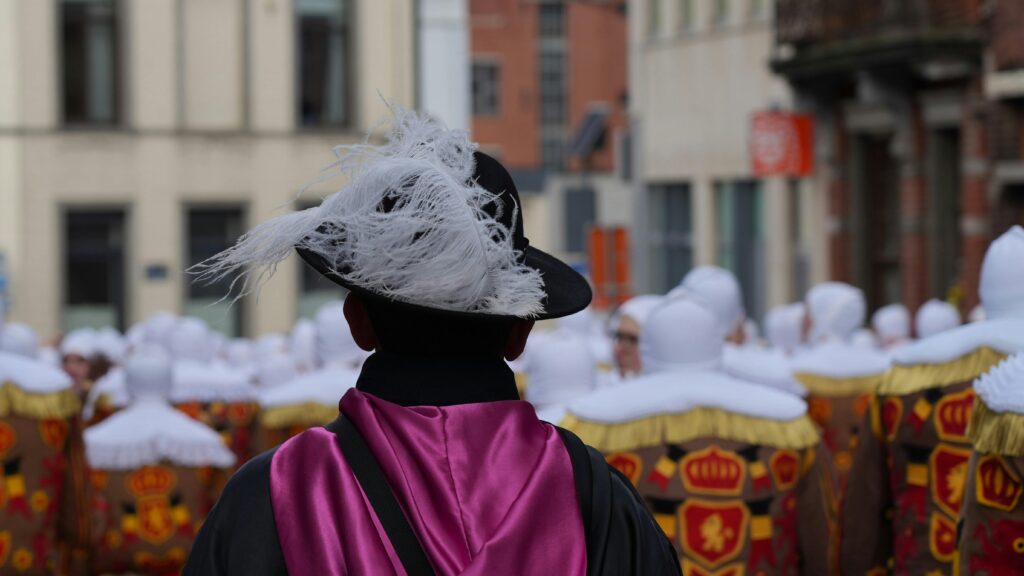
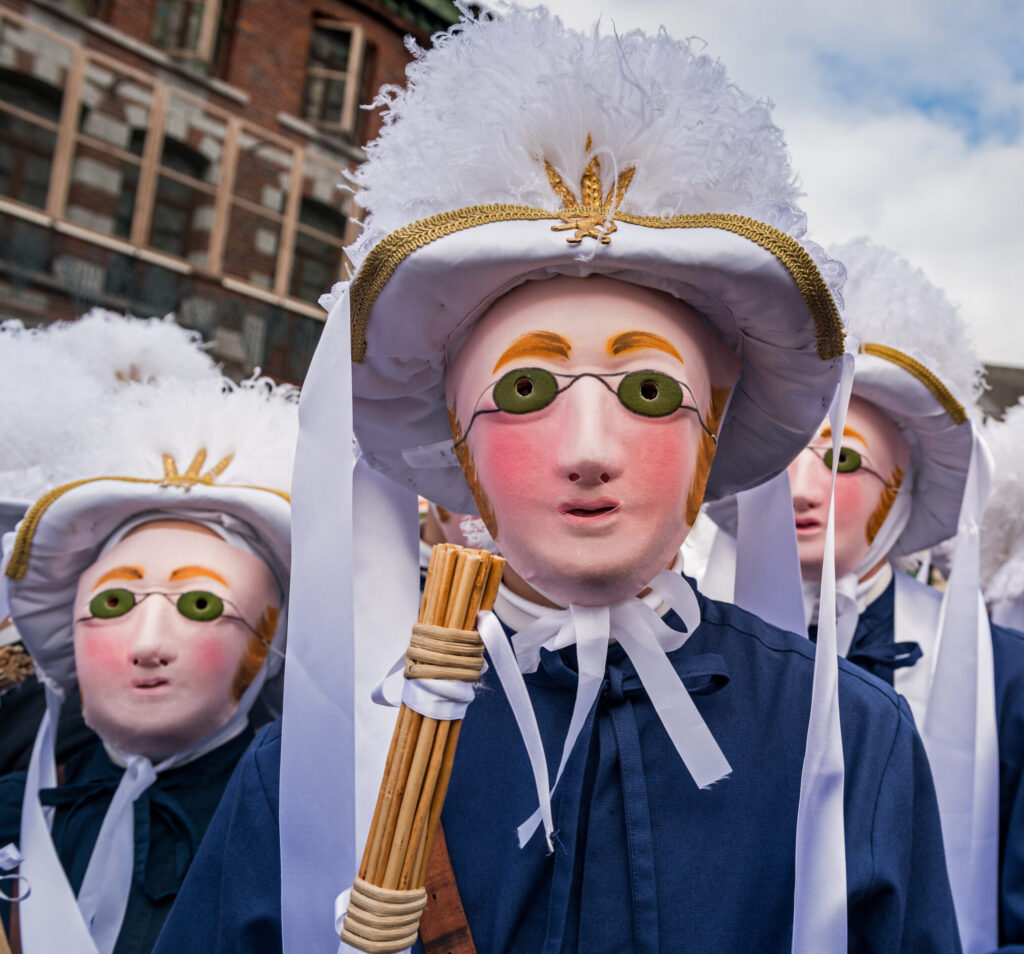
Experience the Soul of Belgian Heritage
In the picturesque town of Binche, history and festivity intertwine in a way few places can replicate. For three days leading up to Ash Wednesday, cobblestone streets come alive with the echoes of drums, vibrant costumes, and a tradition so cherished it has earned recognition as a UNESCO Intangible Cultural Heritage. The Carnival of Binche is an enduring celebration that’s a ritual that breathes life into the town and its people.
The Carnaval of Binche’s Legacy
The Carnival is as much about the town itself as the events it hosts. Binche’s history stretches back to the 14th century, with its Carnival evolving as a testament to the enduring spirit and cultural identity of its people. Legend ties the iconic Gilles costumes and rituals to 1549, when Inca performers were said to have captivated the town during a royal visit by Philip II of Spain and Mary of Hungary. The exotic costumes and dances introduced a unique flair to the Flemish traditions, leaving a lasting imprint on the Carnival’s evolution. At the heart of the celebration is the Grand Place, where the Gilles (iconic figures whose presence defines the spirit of the Carniva) gather in the early hours of Shrove Tuesday for the Aubade Matinale, marking the start of the day’s festivities. Dressed in plain white shirts, the Gilles enjoy a traditional breakfast, often accompanied by champagne, before donning their elaborate costumes. The rhythmic beating of drums sets the tone, filling the streets with an atmosphere of anticipation and celebration.
For those intrigued by the festival’s heritage, the Museum of Carnival and Mask, established in 1975, provides an in-depth look at the artistry and cultural significance behind this time-honored tradition. Visitors can explore exhibits that detail the craftsmanship of the Gilles’ costumes, the symbolic meaning of the masks, and the Carnival’s UNESCO-recognized status as part of the Intangible Cultural Heritage of Humanity since 2003. Binche’s residents take immense pride in their Carnival, welcoming visitors with warmth and ensuring they feel part of the celebration’s vibrant and historic tapestry. The Carnival concludes with a grand display of fireworks, symbolizing the joyous culmination of the festivities.
The Gilles: Guardians of Heritage
At the heart of the Carnival stand the Gilles, emblematic figures who encapsulate the festival’s essence and enduring tradition. Clad in elaborate costumes adorned with bells, intricate embroidery, and feathered hats, each ensemble is handmade by local artisans and reflects a centuries-old tradition. These costumes, often costing up to €3,000, require months of meticulous preparation, emphasizing the community’s dedication to preserving this legacy. The Gilles’ wax masks, worn during the morning procession, lend an air of mystery before being replaced by towering ostrich-feathered headdresses, symbolizing prosperity and protection. With baskets of oranges in hand, the Gilles parade through the streets, tossing the fruit to onlookers as a gesture of goodwill and abundance. Catching an orange is believed to bring good fortune, while dodging one is a playful initiation into this beloved custom. The Gilles represent Binche’s collective identity, blending pagan and Christian influences in a celebration that has stood the test of time. The rhythmic beating of drums accompanying their procession seems to bridge past and present, connecting today’s revelers with generations before them, ensuring the Carnival remains a living tradition that unites the community in shared pride and joy.
Explore Beyond Binche
While the Carnival takes center stage, the surrounding region offers additional delights. Mons, just a short train ride away, boasts rich artistic and historical heritage as a European Capital of Culture. Charleroi, with its industrial edge, provides a modern contrast. Meanwhile, Belgium’s culinary treasures await—pair crispy fries with a Trappist beer, or savor handmade chocolates for a quintessentially Belgian experience.
Practical Tips: Your Ultimate Guide to the Carnival of Binche
- Dates: Mark your calendar for February 11–13, 2025, with Shrove Tuesday offering the most vibrant celebrations.
- Exclusive Access: Enjoy prime viewing spots for the Gilles’ procession, or opt for private guided tours to delve into the Carnival’s history and hidden gems.
- Costume Magic: While full costumes are reserved for the Gilles, we can help you find festive accessories to blend into the spirited atmosphere.
- Seamless Navigation: Binche’s compact layout is perfect for exploring on foot. Let us arrange seamless transportation from major cities like Brussels or Mons for a stress-free journey.
- Accommodation: Stay close to the magic at boutique hotels in Binche or opt for luxury accommodations in nearby Mons or Charleroi, tailored to your preferences.
An Invitation to Experience Tradition
The Carnival of Binche stands as a vibrant celebration that’s a glimpse into a world where history, folklore, and joy converge. Behind every mask and in every drumbeat lies a story waiting to be discovered. Step into Binche’s living tradition and let the echoes of its past and present create memories you’ll cherish forever.
The Carnival of Viareggio: A Masterpiece of Satire and Color
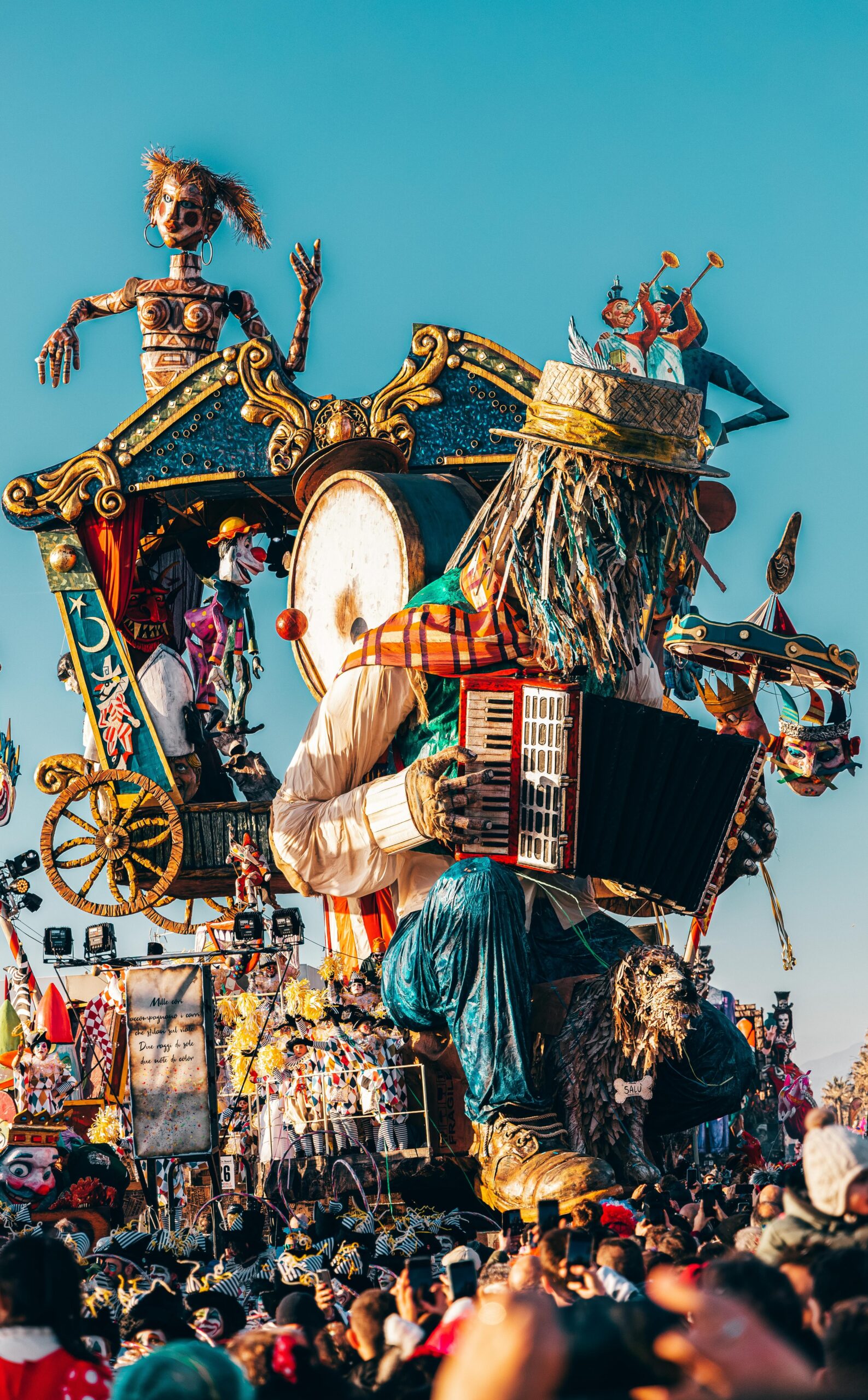
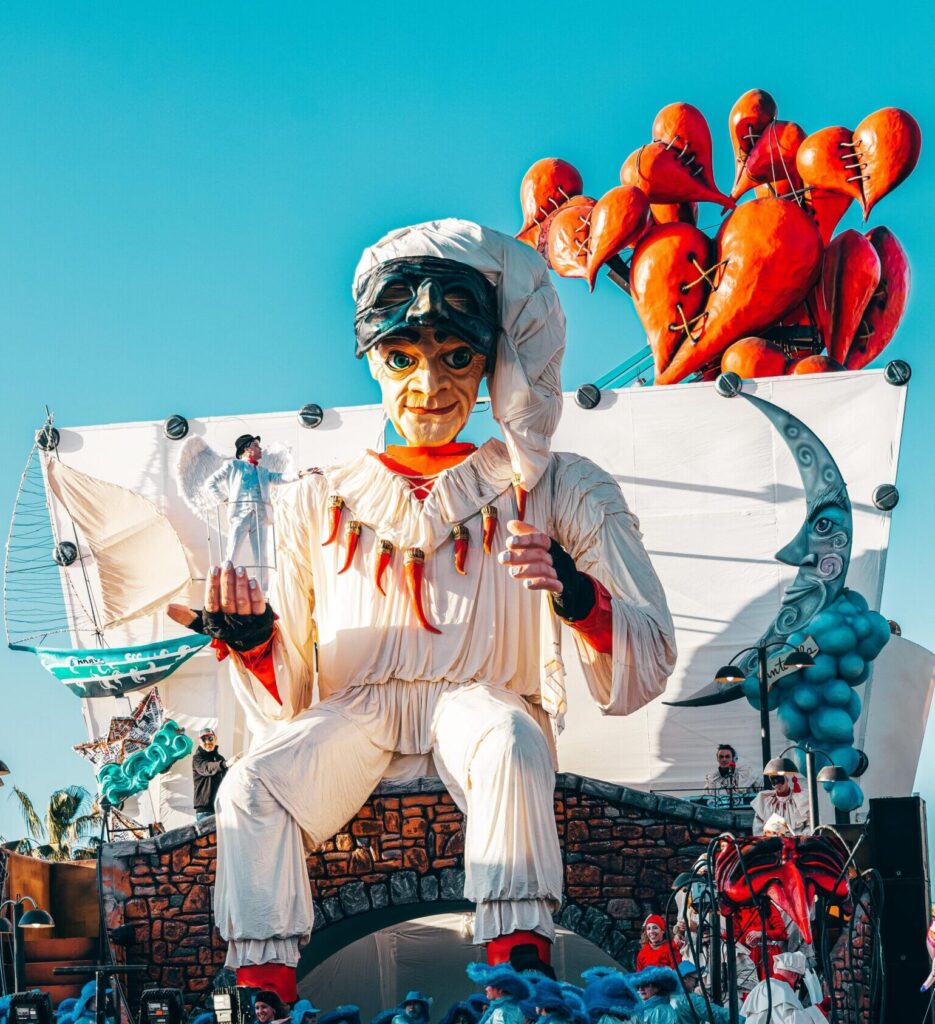
Where Art and Celebration Meet – Italy
In the vibrant coastal town of Viareggio, artistry and festivity come together in a radiant celebration that fills the air with color, music, and creativity. The Carnival of Viareggio is renowned for its monumental papier-mâché floats—towering, intricate creations that deliver sharp social commentary with a touch of humor. These larger-than-life floats, often exceeding 10 meters in height, parade through the streets as bold statements on politics, pop culture, and global events.
The Grand Spectacle: Parades of Creativity
The Carnival has been an integral part of Viareggio’s identity since its inception in 1873, born from the town’s desire to create a unique cultural celebration. It serves as a platform for the town to celebrate its heritage, showcase its creativity, and express its voice through satire. This deep connection is symbolized by Burlamacco, the official mascot of the Carnival, created in 1930 by the visionary artist Uberto Bonetti. Burlamacco first appeared on a Carnival poster in 1931, alongside Ondina, a female figure representing summer and the sea, underscoring Viareggio’s connection to its coastal charm. Burlamacco’s vibrant costume, combining elements from Italy’s traditional Commedia dell’Arte characters such as Arlecchino and Pierrot, embodies the spirit of joy and artistic fusion that defines the Carnival.
The centerpiece of the festivities is the Corsi Mascherati, grand parades that transform the seafront promenade into a vibrant stage. These parades feature monumental floats, some towering up to 20 meters high and weighing up to 40 tons, accompanied by performers in elaborate costumes, live bands, and dancers who bring the streets alive with energy. Confetti showers the crowd as the music pulses through the air, creating an atmosphere of pure joy. Each float is a collaborative masterpiece, blending satire, artistry, and cultural critique. Crafted at the Cittadella del Carnevale, a state-of-the-art complex dedicated to float-making and established in 2001, these creations are the result of year-long dedication by 16 master artisan teams. Combining traditional papier-mâché techniques with modern mechanical systems, these floats often incorporate moving parts, showcasing the seamless integration of artistry and engineering. Visitors can witness this process firsthand at the workshops, where the scale and detail of each creation inspire awe. The Cittadella also houses a museum that chronicles the Carnival’s history and showcases iconic floats from past parades. A standout moment in the Carnival’s international connections came in 1981, when Viareggio’s Carnival was officially twinned with the Carnival of Rio de Janeiro, highlighting its global cultural ties.
The Spirit of Viareggio
The performances surrounding the floats add layers of meaning, often reflecting current events and social commentary, including themes like environmental conservation and global unity. Each moment along the Lungomare becomes a blend of spectacle and storytelling, making Viareggio’s Carnival an unforgettable experience that celebrates both artistry and community spirit. For those looking to deepen their connection with the Carnival of Viareggio, several immersive experiences await. At the Carnival Museum, visitors can gain a behind-the-scenes look at the history and artistry of the floats crafted at the Cittadella del Carnevale, where talented craftsmen bring these monumental creations to life. As night falls, the Luminara di Viareggio transforms the town into a dreamlike scene, with stunning light displays illuminating the streets and casting a magical glow over the festivities. For a taste of timeless elegance, the Exclusive Gala Balls offer an opportunity to mingle with Italy’s elite in opulent venues adorned with fine décor, exquisite wines, and live entertainment. These experiences, steeped in tradition and creativity, ensure that every visitor leaves with unforgettable memories of Viareggio’s vibrant spirit.
Beyond The Carnival:
Viareggio itself, with its picturesque promenade along the Mediterranean, provides an idyllic setting for the celebration. The Lungomare, the scenic waterfront avenue, becomes the heart of the festivities, offering stunning views and an electric atmosphere. The Carnival draws over 600,000 visitors annually, contributing significantly to Viareggio’s economy and making it a vital part of the town’s cultural and financial identity. Beyond the carnival, visitors can explore the town’s sandy beaches, relax at boutique hotels like Principe di Piemonte, or venture into the surrounding Tuscan countryside for wine tastings at renowned vineyards and luxurious retreats.
Practical Tips: Your Ultimate Guide to the Carnival of Viareggio
- When to Go: February 8–25, 2025. The grand Corsi Mascherati parades take place on February 15 and 22. We’ll ensure your itinerary is tailored to capture the Carnival’s highlights.
- Exclusive Access: Gain VIP entry to the Cittadella workshops or premium seating for the parades. Our connections will elevate your Carnival experience.
- What to Wear: Comfortable footwear for exploring and festive attire to join the revelry. We can also help arrange bespoke accessories to match the spirit of the occasion.
- Seamless Travel: Viareggio’s compact streets are perfect for strolling. For those venturing beyond, we’ll coordinate transportation to nearby Tuscan gems like Pisa and Lucca.
- Accommodation: Elevate your stay with a choice of luxurious accommodations such as Hotel Principe di Piemonte, Grand Hotel Royal, or the boutique charm of Villa Rosmarino—all offering impeccable service and proximity to the festivities.
A Celebration of Expression and Community
The Carnival of Viareggio celebrates the power of art, humor, and tradition in a way that feels uniquely alive. From the towering floats to the vibrant streets of this seaside town, every detail is a testament to creativity and community. Let Viareggio inspire you to embrace the joy of expression and the beauty of shared moments.
The Carnival of Patras: A Celebration Rooted in Tradition
Where Culture and Community Converge – Greece
In Patras, carnival is not merely a festivity; it’s a profound expression of culture and community. Each February, this vibrant Greek city transforms into a stage where history, folklore, and artistic expression collide in a spectacular display of pride and creativity. For the people of Patras, the carnival is a time to come together, casting aside everyday routines to embrace a shared celebration of identity.
Tradition and Transformation in Patras
What sets the Carnival of Patras apart is its ability to seamlessly weave ancient traditions with modern influences. This festival, dating back to 1870, began as a modest event influenced by Venetian customs, reflecting Patras’s historical ties to Western Europe. Over the years, it evolved into Greece’s largest and most vibrant carnival, attracting over 300,000 visitors annually. The Bourboulia, an event introduced in 1880, stands out as a symbol of social progress. Women don black domino masks and cloaks, allowing them to participate anonymously in dances—a radical departure from the era’s rigid social norms. This tradition broke significant barriers, empowering women in a way that was both subtle and revolutionary. The carnival’s famous Floats Parade, held on the final Sunday before Ash Wednesday, features colossal, intricately designed floats that take a year to craft, blending artistry with cultural critique.
The Playful Spirit of Patras
The Treasure Hunt Game, known locally as ‘Kynigi Tou Thisavrou,’ is a unique highlight of the Patras Carnival. Introduced in the 1960s, this interactive event invites participants to explore the city while solving clues, fostering community engagement and embodying the carnival’s dynamic and inclusive spirit. The game attracts over 50 teams annually, making it a cornerstone of the festivities. Patras itself transforms into a living canvas during the carnival. Local artisans and creatives leave their mark through elaborate floats, vibrant costumes, and unforgettable performances. The city’s residents take immense pride in their role, ensuring that every visitor feels part of the celebration. Beyond the carnival, Patras offers access to Greece’s cultural and natural wonders. A short journey leads to Olympia, the birthplace of the Olympic Games, or Ancient Delphi, where the Oracle once shaped destinies. For those seeking tranquility, the Ionian coast offers breathtaking views and serene beauty, providing the perfect counterpoint to the energy of the festivities. Pair these experiences with the excitement of the carnival, and you have a journey that seamlessly blends luxury, culture, and celebration.
Practical Tips: Your Ultimate Guide to the Carnival of Viareggio
For an unforgettable adventure, let us tailor your Carnival of Patras experience:
- When to Go: Secure premium seating for the Grand Parade on February 23 or exclusive reservations for the Traditional Ball.
- Exclusive Access:: Explore the artistry of the floats before they take center stage, gaining insights into the craftsmanship and creativity that bring them to life.
- What to Wear: Costumes are essential. From elegant masquerade designs to playful, bold creations, we can connect you with local designers for a bespoke look that fits the carnival’s spirited energy.
- Accommodation: Choose from the historic grandeur of Poseidon Palace, the refined elegance of Maison Grecque Hotel Extraordinaire, or the modern sophistication of The Bold Type Hotel—each offering impeccable service and proximity to the carnival’s vibrant energy.
Life Is a Carnival
Patras is your gateway to an experience that lingers long after the confetti settles. Whether you’re competing in the Treasure Hunt, twirling at the Traditional Ball, or standing amid the Grand Parade’s joyous chaos, each moment offers a chance to immerse yourself in the vibrant culture of Greece. But why stop there? Expand your journey with visits to Greece’s historic landmarks or the serene beauty of the Ionian coast. Explore the cultural and natural wonders that complement the carnival’s festive charm.
The Nice Carnival: A Riviera Spectacle of Joy and Tradition
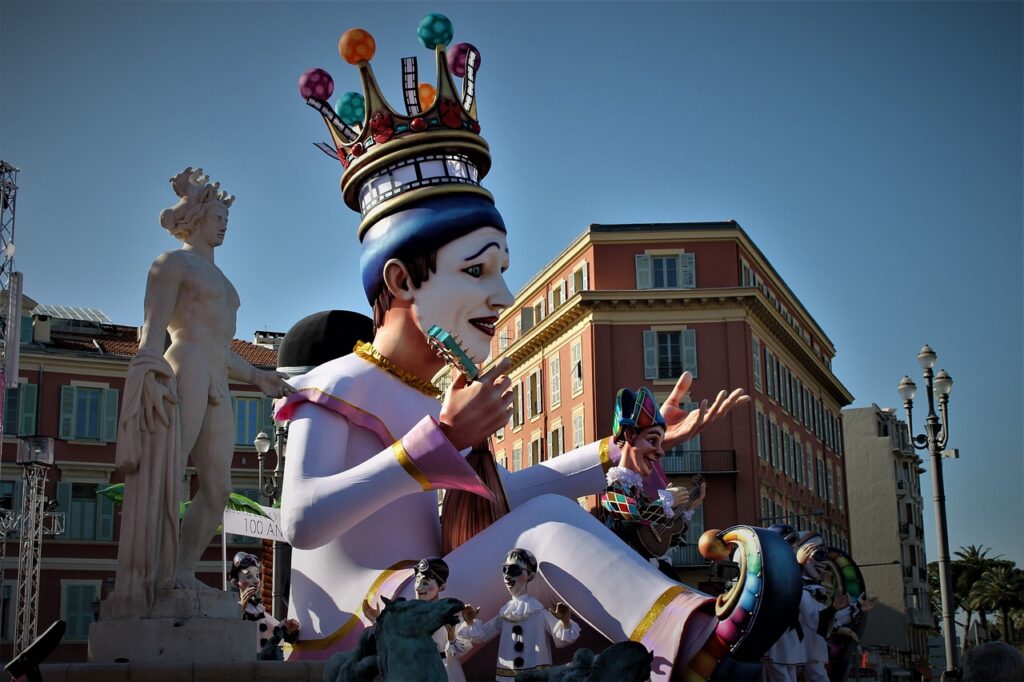
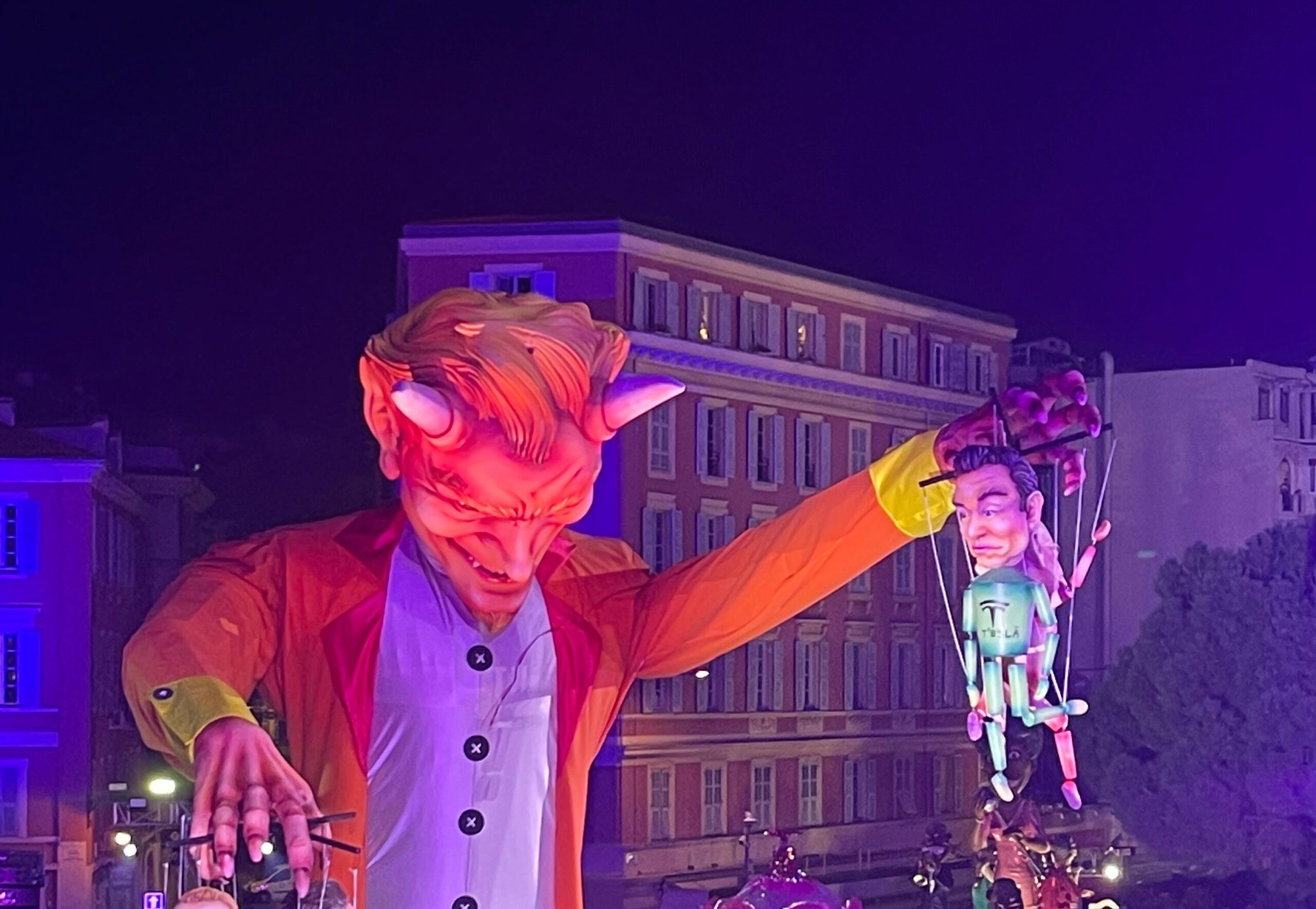
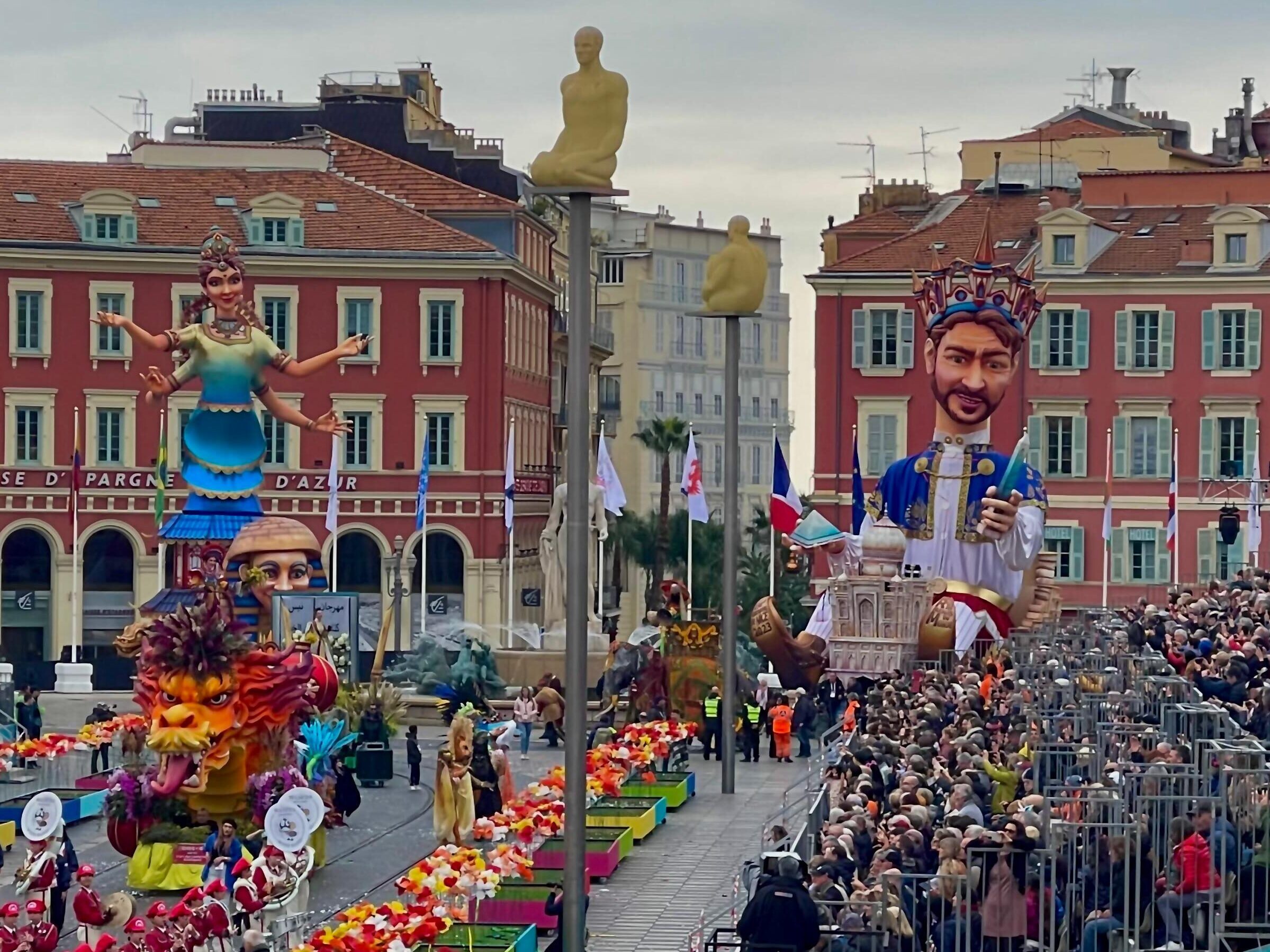
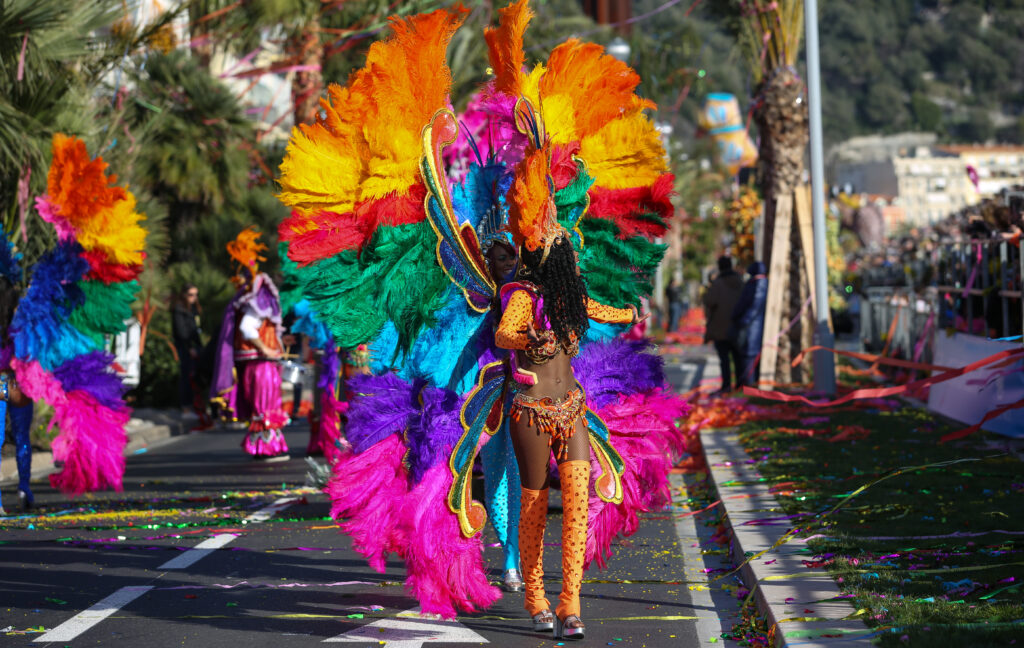

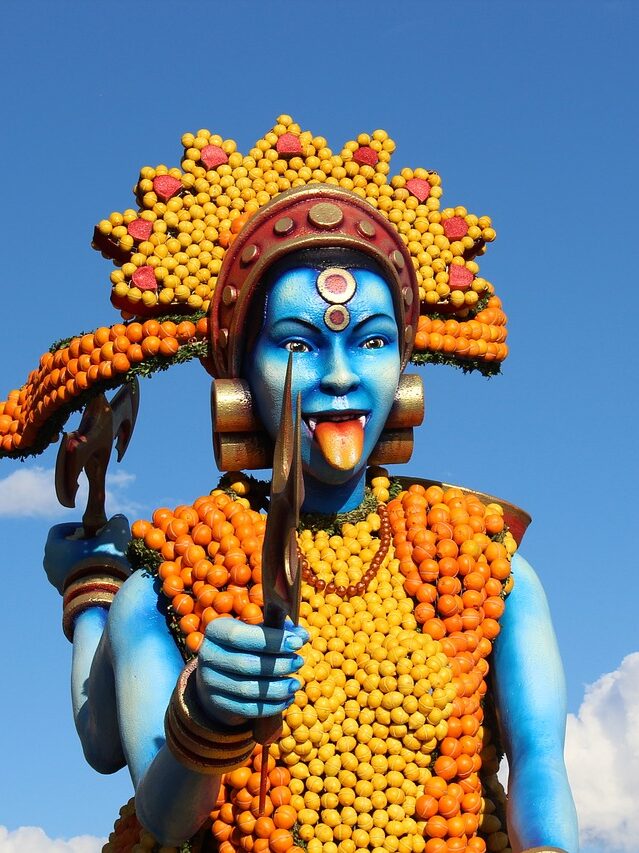
Imagine a city where winter sheds its greys, giving way to vibrant parades, fragrant blossoms, and the unmistakable joie de vivre of the French Riviera. The Carnaval de Nice is an immersion into the soul of Nice, a jubilant celebration that transforms the city into a living canvas of color and creativity.
A Timeless Festivity
With roots tracing back to 1294, when Provence Count Charles d’Anjou documented his “jubilant carnival days” in Nice, this centuries-old festivity has evolved into one of the world’s most celebrated carnivals. While its grandeur rivals Rio and Venice, its heart remains deeply tied to the people of Nice, blending accessible joy with Riviera elegance. The Nice Carnival is a dynamic blend of history and creativity, offering visitors a window into the city’s vibrant spirit. One of its earliest organized traditions, the Flower Battles (Batailles de Fleurs), began in 1856 as a way to entertain the influx of winter visitors. Today, over 100,000 blooms, including mimosa, carnations, and roses, are showered onto the crowds, many of them sourced directly from local growers. This iconic event not only showcases the Riviera’s floral abundance but also highlights its agricultural heritage. Beyond its visual beauty, the Flower Battles celebrate the region’s natural wealth and connection to its land.
As dusk descends, the Carnival transforms into a glowing spectacle with the Parade of Lights. Illuminated floats, designed with intricate detail, reflect the creativity of the city’s artisans. Acrobats, dancers, and street performers bring the celebration to life, enhancing the enchanting atmosphere. This year’s theme, “King of the Oceans,” ties the festivities to the Mediterranean, weaving maritime elements into every performance and design. The theme serves as a nod to the Mediterranean’s significance to the region, likely chosen to emphasize environmental awareness, maritime culture, and the historical relationship between Nice and the sea. By anchoring the celebration in its natural surroundings, this theme provides a creative lens for participants and artisans alike.
The Craftsmanship Behind the Magic
Behind the scenes, the Carnival owes its brilliance to the Carnavaliers, master craftsmen who spend an entire year bringing these visions to life. Approximately 40 artisans collaborate to create the intricate floats that define the event, often working within family-run workshops that have passed down this art form for generations. Names like Povigna, Signorelli, and Vitali stand out as stewards of this enduring tradition.
Recent innovations, such as the use of robotic carving tools, have modernized the float-making process while preserving the artistry’s essence. These creations not only reflect the annual themes but also serve as platforms for storytelling, satire, and cultural pride. Recognized in 2019 as part of France’s Inventory of Intangible Cultural Heritage, the craftsmanship of the Nice Carnival represents a bridge between history and innovation. From its historic beginnings to its modern-day marvels, the Nice Carnival is a testament to the city’s ability to balance tradition and creativity. Welcoming over one million visitors annually, it remains a cornerstone of Riviera culture, offering an invitation to experience its vibrancy and heritage firsthand.
A Celebration for Everyone
The Nice Carnival is more than floats and parades; it is a celebration that reflects the city’s vibrant community spirit. Among its most distinctive events is the Lou Queernaval, France’s first LGBTQ+ carnival celebration. This event, introduced in 2015, stands as a testament to inclusivity and progressiveness. It brings together people from all walks of life in a joyous expression of unity and diversity, embodying the carnival’s core values of acceptance and celebration.
Lou Queernaval features dynamic performances, colorful costumes, and a welcoming atmosphere that transforms the streets of Nice into a safe and vibrant space for self-expression. It is a moment where the traditional merges with the contemporary, highlighting the Carnival’s ability to evolve while honoring its cultural roots. This celebration of love and equality is not just a part of the Carnival—it is a reflection of the city’s enduring commitment to embracing everyone who comes to revel in its February magic.
Beyond Carnival: The Riviera in Full Bloom
For those seeking a quieter moment, Old Nice (Vieux Nice) provides an authentic escape. Wander its narrow, cobblestone streets, indulge in the local flavors of socca (a savory chickpea pancake), and let the lively markets and pastel-colored facades immerse you in the city’s heritage. Or, pause at the Matisse Museum or Chagall Museum, where the works of these artistic masters echo the carnival’s vibrant spirit.
While Nice is the Carnival’s epicenter, its magic extends beyond the city. Just a short drive away, you’ll find other dazzling celebrations:
- The Mimosa Festival in Mandelieu-la-Napoule A golden ode to spring, featuring parades and vibrant displays of the Riviera’s signature blooms. This festival celebrates the mimosa’s arrival in Europe and its enduring role as a symbol of the region’s charm and natural beauty.
- The Lemon Festival in Menton A celebration of citrus mastery dating back to 1934, where over 140 tons of lemons and oranges are transformed into spectacular sculptures and floats. Menton’s unique climate nurtures some of the world’s finest lemons, renowned for their sweetness and vibrant flavor. Protected by a PGI (Protected Geographical Indication) status, Menton’s lemons are a cornerstone of its cultural identity, inspiring culinary delights and this dazzling festival that attracts visitors from around the globe.
Together, these festivals form a tapestry of Côte d’Azur culture, offering an unparalleled opportunity to explore the region’s creativity and charm
Practical Tips: Your Guide to the Carnival of Nice
- Dates: Plan your visit from February 15 to March 2, 2025, with the most spectacular events—the Flower Battles and Parade of Lights—taking place during the final weekend.
- Exclusive Access: Secure VIP seating for the Flower Battles and Parade of Lights to enjoy the festivities in comfort and style.
- Getting Around: Nice is easy to explore on foot, but during the carnival, we’ll arrange seamless transport to ensure you don’t miss a moment.
- Accommodations: Let us curate your stay—whether you prefer a luxurious hotel at the heart of the action, such as the iconic Le Negresco, or a serene Riviera retreat like the charming L’Hôtel du Couvent. Other standout options include the refined Maison Albar and the picturesque La Pérouse, each offering an unforgettable experience of Côte d’Azur luxury
Answer the Call of the Carnival
The Nice Carnival is a celebration of life, artistry, and the Mediterranean spirit. From its dazzling parades to its fragrant flower battles, it’s an invitation to experience the Côte d’Azur like never before. This February, let Nice sweep you off your feet and into a world where tradition and creativity reign supreme.
The Carnival of Santa Cruz de Tenerife: Where Joy Meets the Tropics
Under the golden rays of the Canary sun, where the Atlantic waves caress the shores, Santa Cruz de Tenerife awakens to a carnival unlike any other. Streets erupt with vibrant energy, where hypnotic beats and dazzling costumes craft an unforgettable spectacle. This UNESCO-recognized celebration, often compared to Rio for its grandeur, is a pulsating tribute to life, art, and community.
A History Steeped in Celebration
The roots of the Santa Cruz Carnival date back to the 16th century, introduced by Spanish settlers. Over the centuries, the carnival evolved, drawing influences from Latin American rhythms and the Canary Islands’ own vibrant traditions. During Franco’s dictatorship, when public celebrations were banned, Santa Cruz defied the odds by renaming the event “Winter Festivities” to keep the spirit alive. This resilience is a testament to the festival’s unbreakable bond with the people of Tenerife. One of the carnival’s defining moments occurred in 1987, when Celia Cruz, the Queen of Salsa, performed alongside Billo’s Caracas Boys in front of a record-breaking crowd of 250,000 people. This electrifying event not only elevated the carnival to global fame but also symbolized its role as a unifying celebration of music and culture. More recently, in 2019, Juan Luis Guerra’s performance drew an astounding 400,000 attendees, reaffirming the Santa Cruz Carnival as one of the world’s premier cultural festivals.
The Spectacle Unfolds
The magic begins with the Gala of the Carnival Queen, where contestants dazzle in costumes so elaborate they weigh up to 200 kilograms. These creations, adorned with rhinestones, feathers, and sequins, are marvels of engineering and artistry, often taking a full year to design. Each costume tells a story, reflecting the theme of the year. This year’s theme, “Pirates of the Caribbean,” not only inspires flamboyant designs but also nods to Tenerife’s historical ties to privateers and maritime adventure during the Age of Sail. Once the Queen is crowned, the carnival’s energy spills into the streets with the Coso Apoteosis, a parade bursting with color, samba dancers, and live music. The streets of Santa Cruz transform into a massive open-air dance floor, where locals and visitors alike celebrate until dawn. Floats explode with imaginative designs, samba beats fill the air, and revelers in intricate costumes bring the parade to life with their infectious energy. At the heart of the carnival lies Plaza de España, the epicenter of festivities. This is where the boundaries between participant and spectator dissolve, as spontaneous conga lines form, costumes glitter under the streetlights, and the infectious rhythm of Latin beats unites everyone in joyous harmony.
The carnival concludes with a uniquely symbolic event: the Burial of the Sardine. In a mock funeral procession, a giant sardine effigy is paraded through the streets, accompanied by mourners in exaggerated costumes. This satirical ritual ends with the ceremonial burning of the sardine, signifying the close of indulgence and the transition into Lent. The spectacle combines humor and poignancy, blending Tenerife’s tradition of satire with its deep cultural ties to renewal and reflection.The magic begins with the Gala of the Carnival Queen, where contestants dazzle in costumes so elaborate they weigh up to 200 kilograms. These creations, adorned with rhinestones, feathers, and sequins, are marvels of engineering and artistry, often taking a full year to design. Each costume tells a story, reflecting the theme of the year. This year’s theme, “Pirates of the Caribbean,” not only inspires flamboyant designs but also nods to Tenerife’s historical ties to privateers and maritime adventure during the Age of Sail. For those seeking a breather from the festivities, Tenerife offers serene escapes. The volcanic landscapes of Teide National Park, a UNESCO World Heritage Site, provide stunning natural vistas, while the historic streets of La Laguna, with their colonial charm, offer a tranquil cultural counterpoint to the carnival’s vibrant energy.
Practical Tips: Your Ultimate Guide to the Carnival of Santa Cruz de Tenerife
- Dates: Mark your calendar from February 7 to February 18, 2025, with the most spectacular events taking place during the final days.
- Exclusive Access: From VIP seating at the Carnival Queen Gala to behind-the-scenes tours of the costume ateliers, let us secure your spot at the carnival’s most coveted moments.
- Costume Magic: Costumes aren’t optional—they’re essential! Whether you choose a daring pirate ensemble or a cascade of sequins and feathers, we can arrange a custom creation from local designers.
- Seamless Navigation: Santa Cruz’s lively streets are best explored on foot, but we’ll arrange tailored transport for excursions to Teide National Park or Tenerife’s beaches.
- Accommodation: Iberostar Heritage Grand Mencey, Hotel Botánico & The Oriental Spa Garden, Bahía del Duque, and The Ritz-Carlton, Abama each offer exceptional stays during the Santa Cruz Carnival, blending luxury and proximity to the festivities. Whether you’re seeking elegance in Santa Cruz or a tranquil retreat along the coast, your options ensure an unforgettable experience.
Answer the Call of Santa Cruz
The Carnival of Santa Cruz de Tenerife is a kaleidoscope of history, music, and vibrant energy—a celebration that pulses through the streets and lingers in your soul. With every samba step, every burst of confetti, and every glimmer of sequins, it’s an invitation to let go, connect, and live in the moment. Are you ready to step into the rhythm of life?
The Carnival of Cologne: A Rhineland Celebration of Spirit and Humor – Germany
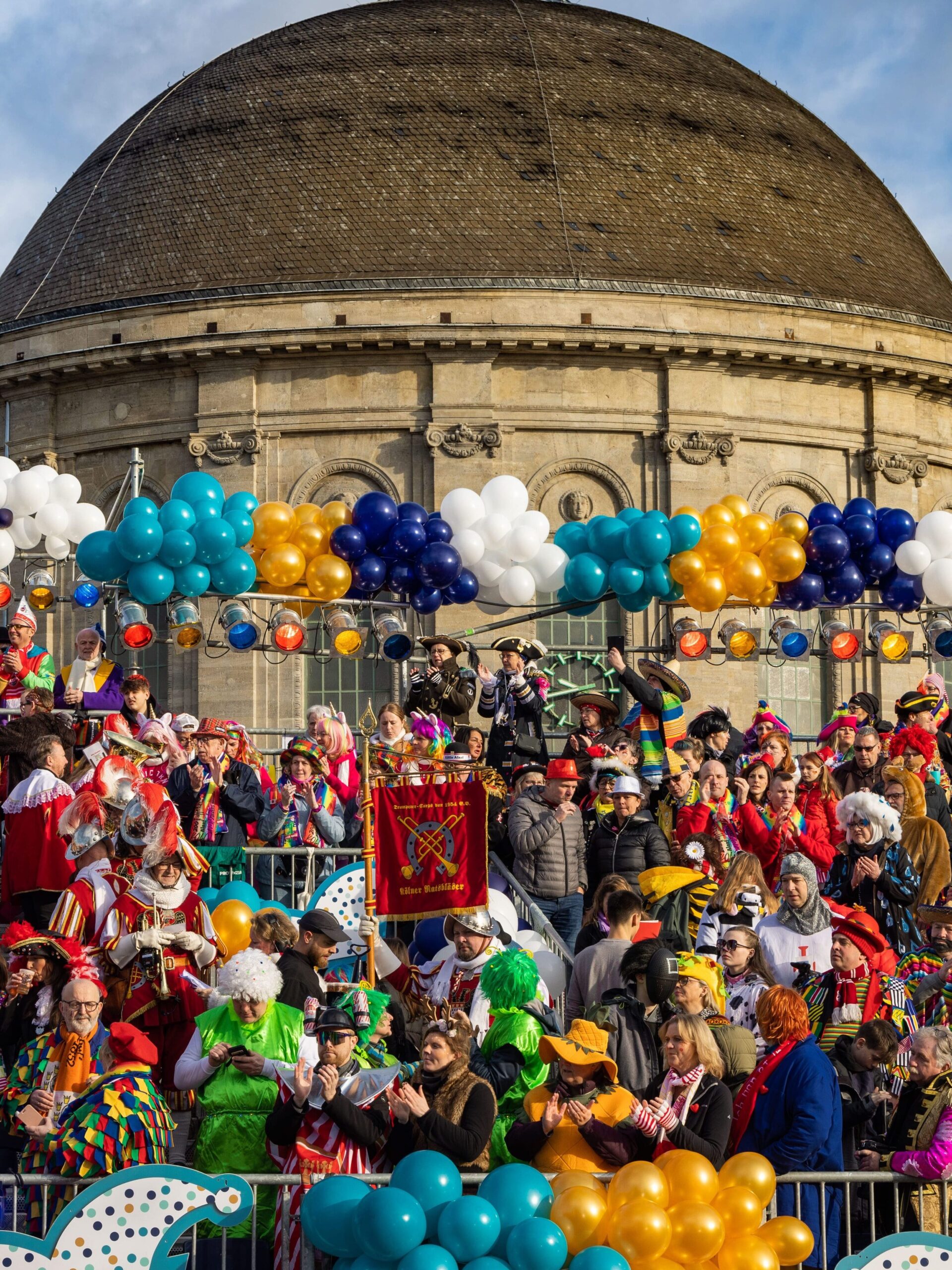
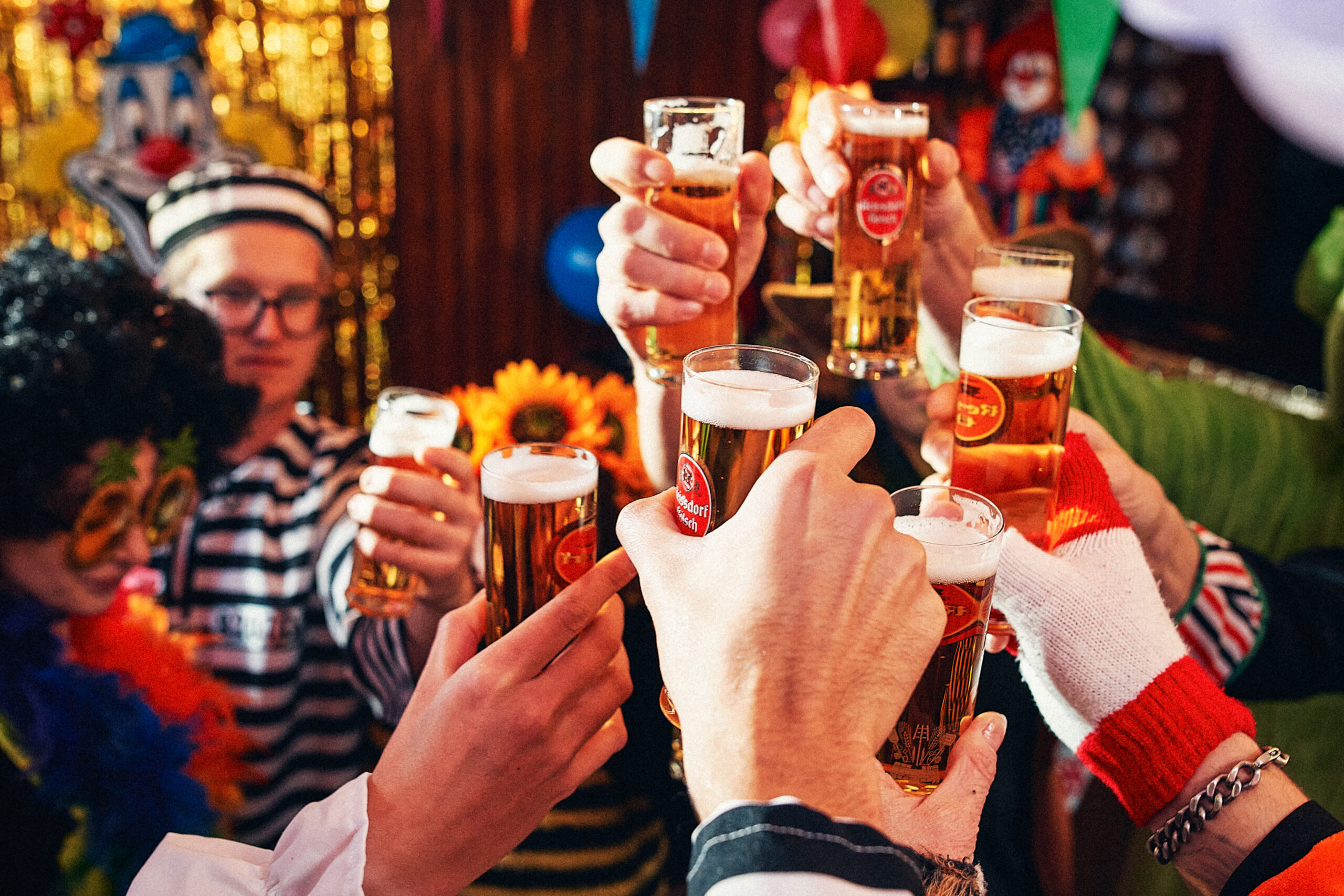
Where Laughter and Tradition Converge
Can you hear the heartbeat of a city? In Cologne, you don’t just hear it—you feel it. This is a city where humor and tradition collide, where every February, the Rhineland transforms into a vibrant celebration of life. The Carnival of Cologne, or “The Fifth Season” as locals fondly call it, begins ceremoniously on November 11th at 11:11 a.m. But the true revelry erupts in the week leading up to Ash Wednesday, turning the city into a stage of satire, music, and boundless creativity. From the cobblestone streets of the Altstadt to the grand avenues hosting the iconic Rosenmontag Parade, Cologne unleashes its unapologetic zest for life, proving that seriousness has no place here.
Cologne and Its Timeless Spirit
The Carnival of Cologne isn’t just an event; it’s a tradition deeply rooted in history and community. Tracing its origins back to medieval times, it began as a solemn religious observance marking the pre-Lenten period. Over the centuries, it evolved into a vibrant celebration of freedom, resilience, and satire, reflecting the city’s ability to adapt and thrive through adversity. During times of political unrest, the carnival served as a powerful outlet, using humor and creativity to challenge authority and unite the community under a shared spirit of defiance and joy. At the heart of the festivities is the Altstadt (Old Town), where narrow cobblestone streets transform into a lively tapestry of music, laughter, and camaraderie. Strangers share Kölsch beer, conga lines form spontaneously, and the air hums with the sound of marching bands and cheering revelers. Towering over it all is the iconic Cologne Cathedral (Kölner Dom), a steadfast witness to the city’s enduring traditions. Its presence serves as a poignant reminder of Cologne’s resilience, blending the sacred with the celebratory.
Among the most unique traditions of Cologne Carnival is Weiberfastnacht, or Women’s Carnival Day. Originating in the 19th century, this event empowers women to take center stage, symbolizing social freedom and equality. Armed with scissors, they humorously snip men’s ties, a gesture that has become both a playful and symbolic act of liberation. The day’s festivities include lively parades, costumed dances, and impromptu performances, reflecting the city’s inclusive and joyful ethos. This blend of history, humor, and spontaneity ensures that Cologne Carnival remains one of Europe’s most cherished cultural celebrations. Its traditions are not merely observed but lived, creating an atmosphere where past and present seamlessly converge, and every participant becomes part of its enduring legacy.
Rosenmontag: The Pinnacle of Celebration
At the heart of Cologne Carnival is Rosenmontag (Rose Monday), a day where over a million spectators gather to witness the city’s most dazzling parade. Elaborate floats, adorned with biting satire, take aim at politicians, celebrities, and cultural icons, reminding everyone that Cologne’s humor is as sharp as it is bold. For example, during the 2019 parade, a float humorously depicted then-Chancellor Angela Merkel in a piece inspired by Banksy’s self-destructing artwork, symbolizing her announcement to step down after her fourth term. Marching bands, costumed dancers, and energetic revelers flood the streets, tossing over 300 tons of sweets, known locally as Kamelle, into the cheering crowds. This isn’t a spectator sport. The carnival thrives on participation—whether it’s joining a conga line, sharing a Kölsch beer with a stranger, or shouting “Kölle Alaaf!” (Cologne above all!) in joyous unison. And when it comes to costumes, the rule is simple: the bolder, the better. Pirates, bananas, unidentifiable characters—anything goes, as long as it sparks joy.Artisans and
Costumes: A Creative Showcase
Behind Cologne’s vibrant parades and elaborate floats lies a network of skilled artisans and designers who dedicate months to crafting costumes and masks that capture the humor, satire, and artistic heritage of the city. Central to this tradition are the iconic figures of the Prince, the Peasant, and the Virgin, who represent the pillars of Cologne’s carnival identity. Each year, these traditional characters are brought to life through costumes adorned with intricate embroidery, hand-painted details, and rich fabrics.
Approximately 40 ateliers and workshops across Cologne contribute to the carnival’s artistic vision, with some of the most recognized being Worringer Werkstatt and Kostümhaus Rüther. These ateliers specialize in creating one-of-a-kind designs, blending traditional craftsmanship with contemporary elements to keep the celebration both rooted in history and refreshingly modern. Notable creations include the elaborate headpieces for the Virgin, often exceeding 15 kilograms in weight, and the satirical masks that caricature political figures and current events. Each costume and float is tailored to reflect the year’s theme, requiring up to six months of meticulous planning and execution. These artisans’ commitment ensures that Cologne’s carnival remains not only a spectacle of joy but also a testament to the enduring importance of creativity, community, and cultural preservation.
Beyond the Festivities
When the confetti settles, Cologne offers a treasure trove of experiences for those seeking a change of pace. Stroll along the Rhine River Promenade, where the views soothe the senses, or delve into the artistic wonders of the Ludwig Museum, showcasing a quieter yet equally vibrant side of the city’s creativity. Venture beyond Cologne to the nearby Rhine Valley, with its storybook castles and charming villages, or visit Bonn, a picturesque city brimming with cultural and historical allure.
Practical Tips: Your Guide to Cologne Carnival
- Dates: Plan your visit between February 15 and February 20, 2025. Don’t miss the Rosenmontag Parade on February 17, the highlight of the festivities.
- Costumes: Embrace the carnival’s playful spirit with bold and creative costumes. From bespoke outfits to quirky accessories, we’ll help you craft a look that stands out.
- Reserve with Us: Whether it’s VIP seating at the Rosenmontag Parade or access to the satirical Stunksitzung shows, we’ll secure your place at the most coveted events.
- Getting Around: Cologne’s streets come alive with impromptu celebrations. While public transport is efficient, we’ll guide you on navigating the festivities to maximize your experience.
- Accommodation: Stay in style at Cologne’s finest hotels, such as Excelsior Hotel Ernst, Hyatt Regency Cologne, or the boutique Savoy Hotel, all offering exceptional comfort and proximity to the carnival action.
Join the Festive Chaos
The Carnival of Cologne is a state of mind, a living tradition that invites you to leave your inhibitions behind and revel in the absurd, the joyous, and the unforgettably human. With Journeys of a Lifetime, your carnival adventure will be seamless, exclusive, and as vibrant as the celebration itself. So, will you answer Cologne’s call to join the madness?
A Final Word on Carnival
From the grand masked balls in Venice to the satirical floats of Cologne, and the vibrant displays in Nice, carnival becomes a living celebration, a reflection of art, culture, and shared joy. At Journeys of a Lifetime, we understand that every traveler deserves an authentic, bespoke experience. When you embark on your carnival journey with us, we don’t just offer you an event; we craft a tailored adventure, meticulously designed to give you access to the most exclusive and immersive moments of these extraordinary festivals. Ready to experience the carnival revolution on your terms? Let us create your journey—where every moment becomes an unforgettable story.


